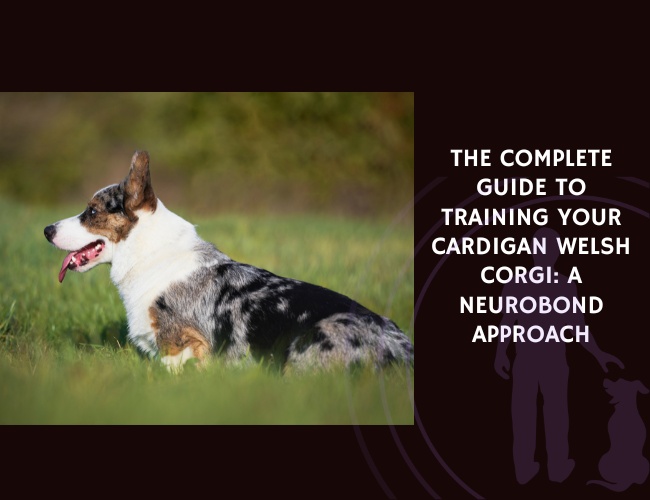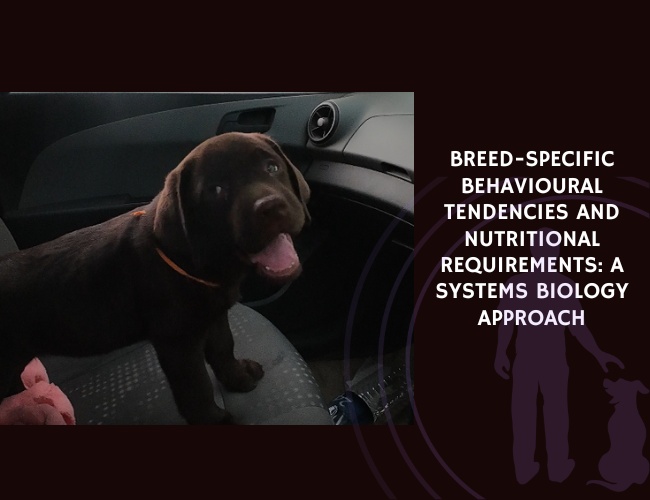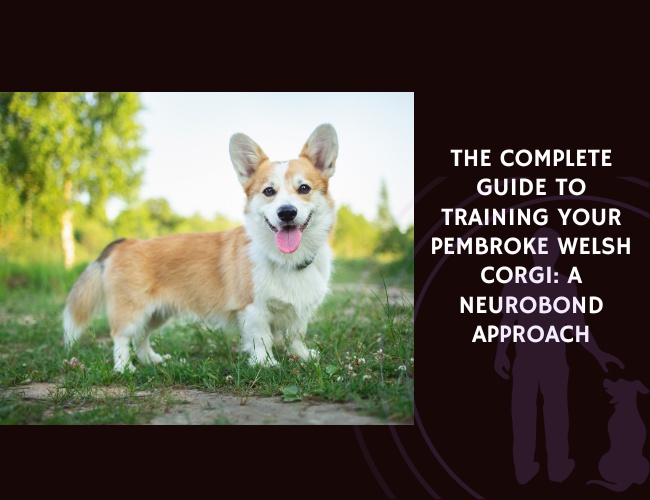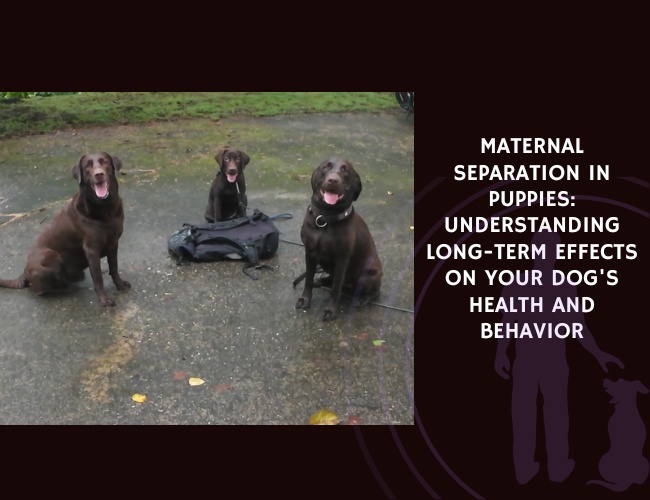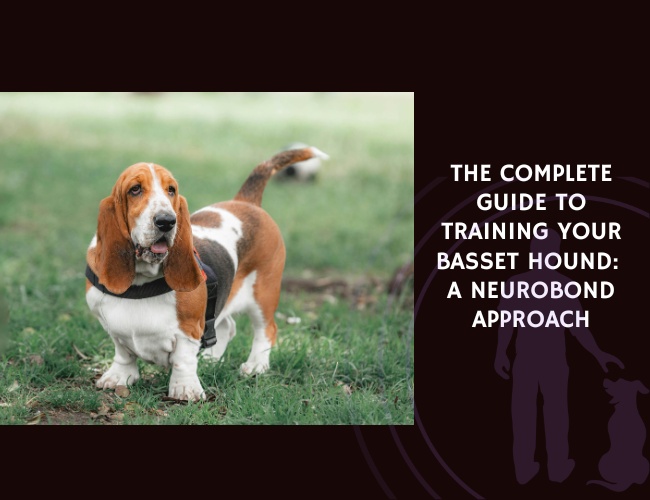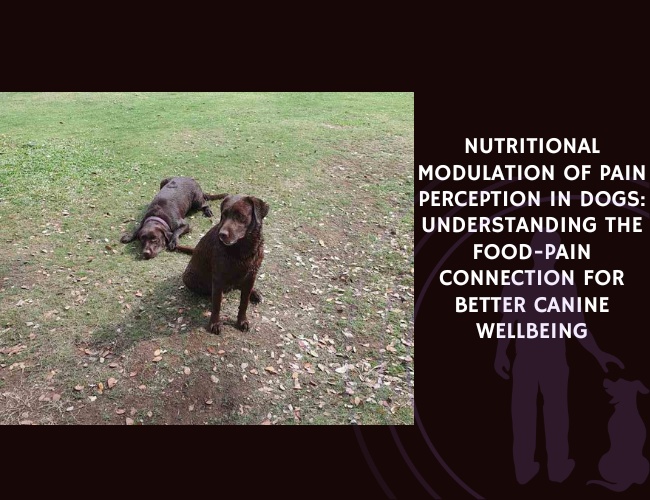Introduction: Understanding Your Cardigan’s Ancient Wisdom
The Cardigan Welsh Corgi carries within its compact frame over 3,000 years of herding wisdom—a legacy that shapes every interaction you’ll have with your furry companion. Unlike traditional training approaches that seek to suppress these ancient instincts, the NeuroBond philosophy invites you to dance with them, creating a partnership that honors your Corgi’s intelligence while building an invisible leash of trust and mutual understanding.
When you watch your Cardigan’s alert ears swivel like satellite dishes or notice their body lower as they eye a running child, you’re witnessing not behavioral problems to fix, but sophisticated cognitive machinery waiting to be channeled. These dogs aren’t just intelligent—they’re independent thinkers, bred to make split-second decisions in the Welsh hills without human guidance. This independence, often mislabeled as stubbornness, is actually your greatest training asset when approached through the lens of connection rather than control.
Character & Behavior: The Cardigan Mind at Work
The Reserved Thinker
Your Cardigan Welsh Corgi approaches the world with a fascinating blend of confidence and caution. More reserved than their Pembroke cousins, Cardigans demonstrate what we call “evaluative intelligence”—they observe, assess, then engage. This isn’t shyness; it’s the mark of a dog whose ancestors survived by reading situations before committing to action.
In the NeuroBond framework, we see this reservation as the dog’s natural problem-solving system at work. When your Cardigan pauses at the dog park entrance, ears forward, weight slightly back, they’re not being difficult—they’re gathering data. This is precisely the moment to let the dog be, allowing their instinctive assessment process to unfold while you provide the stable, confident presence that says “I’ve got your back.”
The Independent Collaborator
Here’s where many training approaches fail with Cardigans: they try to override the dog’s independent thinking rather than partnering with it. Your Cardigan’s intelligence comes with what some call a “stubborn streak,” but this is actually their heritage speaking—these dogs were bred to think for themselves when moving cattle through challenging terrain.
The NeuroBond approach transforms this independence into your training superpower. Instead of demanding blind obedience, you’re creating contexts where your Cardigan’s own decision-making leads them to the behaviors you want. Standing on the leash when they pull doesn’t force compliance—it creates a situation where your dog discovers that calm behavior (sitting, lying down) brings freedom and forward movement. You’re not controlling; you’re teaching through experience, the only language dogs truly understand.
Pack Mentality Meets Family Life
Cardigans see themselves as integral members of a close-knit social group—your family becomes their flock to protect and organize. This manifests in behaviors that might surprise you: the gentle heel nip when children run, the persistent herding of family members toward the living room, or the watchful positioning where they can monitor all household activities.
Through the NeuroBond lens, these aren’t problems but feedback about your dog’s need for purposeful engagement within the family system. Your Cardigan is telling you, “I need a job within this pack.” The solution isn’t suppression but redirection—channeling these instincts into structured activities that satisfy their working heritage while strengthening your bond.
Vocalization & Communication: Decoding Your Cardigan’s Language
The Watchdog’s Alert System
Your Cardigan’s bark isn’t random noise—it’s a sophisticated communication system inherited from centuries of farm work. They possess what behaviorists call “contextual barking,” meaning each vocalization carries specific information: the sharp, rapid bark for strangers; the lower, sustained alert for unusual sounds; the excited yip for family arrivals.
In NeuroBond training, we don’t silence this communication—we refine it. Your dog is offering feedback about their environment, and punishing this would be like putting tape over a smoke detector. Instead, acknowledge the alert (“Thank you for telling me”), investigate if appropriate, then guide them to calm. This validates their instinct while establishing you as the decision-maker, building trust that you’ll handle threats they identify.
Beyond Barking: The Subtle Signals
Cardigans communicate volumes through body language that many owners miss. The slight ear rotation that precedes a bark, the subtle weight shift before they move to herd, the particular tail position that says “I’m assessing this situation”—these are all part of an intricate dialogue your dog is constantly having with you.
Learning to read these micro-communications transforms training from a series of commands into a conversation. When you notice your Cardigan’s ears flatten slightly during training, you’re seeing sensitivity to correction—a signal to soften your approach. That moment when their tail drops from its alert carriage to a lower, slower wag? They’re telling you they’re moving from work mode to connection mode. Training becomes invisible because you’re responding to what they’re already telling you. 🐾
Training & Education: Building the Invisible Leash
First Step: Establishing the NeuroBond
Before any formal training begins, we build the foundation—the NeuroBond itself. For your Cardigan, this process is particularly crucial because their reserved nature means trust isn’t given freely; it’s earned through consistency and understanding.
Start with simple presence. Sit with your Cardigan without demands, letting them approach and retreat as they choose. When they check in with you—that quick glance, the slight lean against your leg—reward this with calm acknowledgment. You’re not training a behavior; you’re nurturing a default response. In moments of uncertainty, your Cardigan will naturally look to you for guidance rather than making independent decisions that might not align with your household needs.
This bond-building phase typically takes 2-3 weeks with adult Cardigans, less with puppies who haven’t yet developed their full independence. You’ll know it’s working when your dog begins offering eye contact without prompting, when they position themselves to keep you in sight, when their body relaxes in your presence even in new environments.
The Critical Windows: Timing and Development
Your Cardigan puppy experiences the world through distinct developmental phases, each offering unique training opportunities. The critical socialization window from 3 to 16 weeks isn’t just about exposure—it’s about creating positive associations with the full spectrum of life experiences they’ll encounter.
Between 8-10 weeks, many Cardigan puppies experience their first fear period. This isn’t the time for intensive training but for gentle, supportive exposure. Let your puppy observe the world from the safety of your arms or lap, building confidence through your calm presence. The NeuroBond philosophy recognizes that forcing interactions during fear periods creates lasting anxiety, while patient support builds resilience.
The 12-16 week window is golden for Cardigans. Their cognitive abilities are exploding, but their independence hasn’t fully developed. This is when you establish patterns that will last a lifetime: checking in during walks, settling when you stop moving, engaging with you rather than fixating on environmental stimuli. These aren’t trained through repetition but through creating contexts where these behaviors naturally emerge and are rewarded.
Channeling the Herding Heritage
Your Cardigan’s herding instincts will manifest whether you acknowledge them or not. The question isn’t if they’ll try to herd—it’s whether you’ll give them appropriate outlets or leave them to create their own, often problematic, solutions.
The NeuroBond approach embraces these instincts as learning pathways. When your Cardigan attempts to herd running children, don’t punish—redirect. Create games that satisfy the herding drive: “gathering” toys into a basket, “moving” balls from one area to another, or even formal herding activities if available. You’re not suppressing their nature; you’re giving it purpose within your shared life.
Teaching “boundary” games particularly resonates with Cardigans. Set up situations where they learn to move objects (or even willing family members) from point A to point B using only body pressure and positioning—no nipping required. This transforms potential problem behavior into a structured activity that deepens your connection while honoring their heritage.
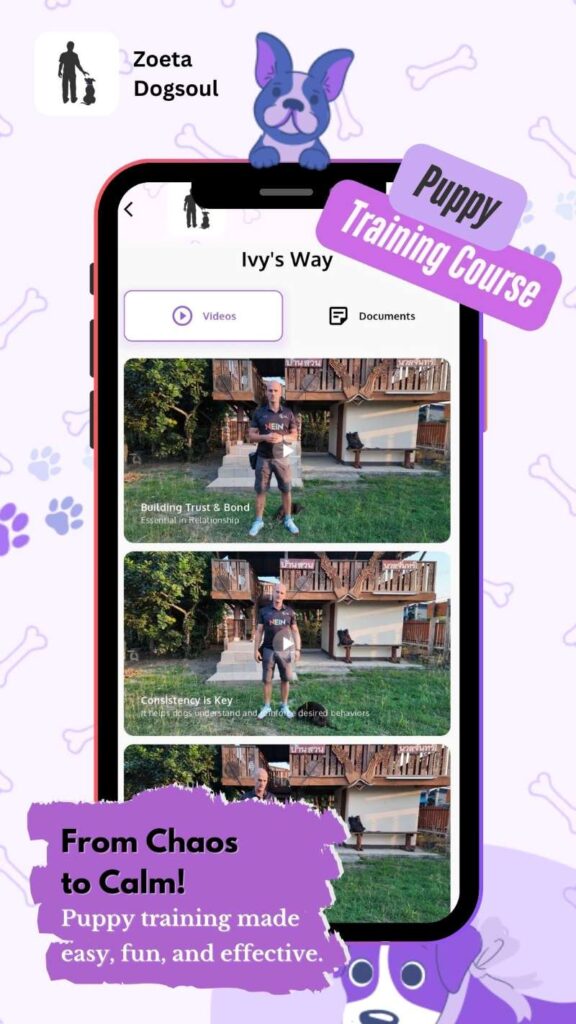
Performance & Activities: Mental and Physical Engagement
The Working Dog’s Need for Purpose
Your Cardigan Welsh Corgi is, at heart, a problem-solver who thrives on having a job. Without purposeful activity, that brilliant mind will create its own entertainment—usually involving redesigning your garden or reorganizing your shoe collection.
The NeuroBond framework views activities not as energy burn-offs but as relationship builders. Every activity becomes an opportunity to strengthen the invisible leash between you. Puzzle feeders aren’t just mental stimulation; they’re trust exercises where your dog learns that good things come through engagement with you-provided challenges. Agility work isn’t just physical exercise; it’s a dance of communication where your body language guides your dog through space.
Structured Play as Training
Cardigans learn best when they don’t realize they’re learning. Structure your play sessions with invisible training woven throughout. A game of fetch becomes recall practice when you occasionally call them back before they reach the toy. Hide-and-seek teaches both stay and come commands without ever making them feel like orders.
The key is maintaining what we call “productive unpredictability”—your Cardigan never knows when play might shift into training or when training might become play. This keeps their adaptive intelligence engaged while preventing the “selective hearing” that smart dogs often develop with predictable command-based training.
The Balance of Independence and Partnership
Your Cardigan needs both solo problem-solving opportunities and collaborative activities with you. Provide puzzle toys they work through alone, building confidence in their decision-making abilities. Balance this with partnership activities—trick training, rally obedience, or even dancing—where success requires reading and responding to your cues.
This balance prevents two common Cardigan training pitfalls: over-dependence (where the dog won’t act without explicit instruction) and excessive independence (where the dog dismisses your input entirely). You’re creating a dog who can think for themselves but chooses to check in with you—the ultimate expression of the NeuroBond philosophy. 🧡
Nutritional Recommendations: Fueling the Learning Brain
Food as Training Currency
Your Cardigan’s relationship with food directly impacts training success. Unlike some breeds with unwavering food drive, Cardigans can be selective eaters, making treat-based training more nuanced. Some individuals are highly food-motivated, while others view treats with casual interest—this isn’t defiance but individual personality.
The NeuroBond approach adapts to your dog’s motivation style. For food-driven Cardigans, use a variety of high-value treats, rotating to maintain interest. For those less food-motivated, discover what does drive them—praise, play, or even just the satisfaction of problem-solving itself. Remember, you’re not bribing behavior; you’re creating positive associations with learning experiences.
Cognitive Nutrition
A well-nourished brain learns better. Cardigans, with their high cognitive demands, benefit from diets rich in omega-3 fatty acids (supporting neural function) and antioxidants (protecting against cognitive decline as they age). Consider this when selecting foods—you’re not just feeding a body but fueling a sophisticated thinking machine.
Meal timing affects training success too. A slightly hungry dog (not starved, just ready for their meal) often shows better focus and motivation. Training sessions 30 minutes before scheduled meals tap into natural food-seeking behaviors without creating anxiety or desperation.
Weight Management and Learning
Cardigans are prone to weight gain, and excess weight doesn’t just affect physical health—it impacts cognitive function and training responsiveness. An overweight Cardigan may show decreased motivation, reduced stamina during training sessions, and even mild cognitive dulling from metabolic changes.
Maintain your Cardigan’s ideal weight not through restriction but through enrichment. Use training activities as calorie-burning opportunities. Scatter feeding engages their problem-solving skills while slowing consumption. Puzzle feeders make meals into mental workouts. You’re not depriving; you’re enriching their relationship with food while supporting optimal learning capacity.
Ancient. Alert. Aligned.
Heritage shapes every choice. Your Cardigan Welsh Corgi carries millennia of herding intelligence, guiding how they assess, decide, and act in daily life. This deep-rooted evaluative nature thrives when met with trust and connection, transforming training into a mutual exchange rather than a top-down directive.
Communication runs deeper. From contextual barking to subtle shifts in body language, your Cardigan speaks in a layered, continuous dialogue. By learning to recognise and respond to these signals, you replace correction with conversation, creating a training flow where guidance feels natural and cooperative.
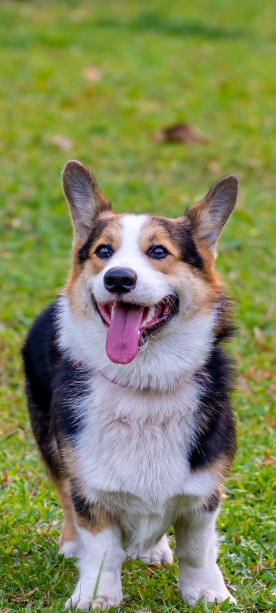

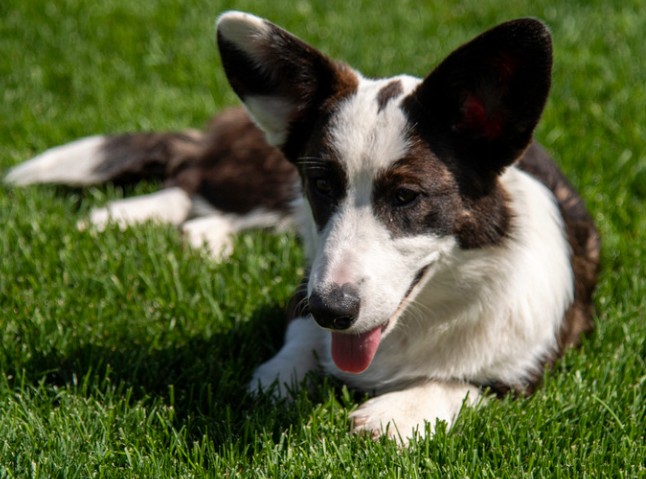
Bond before behaviour. True reliability emerges from the invisible leash—built through presence, patience, and respect for your Corgi’s independent mind. When trust is established first, obedience follows naturally, as your dog chooses cooperation from a place of security and shared purpose.
Health Concerns: When Biology Affects Behavior
Genetic Sensitivities and Training Adaptations
Cardigan Welsh Corgis carry genetic predispositions that directly impact training. Their sensitivity to spatial, motion, and noise stimuli isn’t just personality—it’s hardwired into their nervous system. Understanding this transforms frustration into compassion and failed training into successful adaptation.
Noise sensitivity, common in the breed, requires particular consideration in urban training environments. A Cardigan who “suddenly” won’t perform known behaviors near construction sites isn’t being stubborn—their nervous system is overwhelmed. The NeuroBond approach doesn’t force them to “push through” but builds confidence gradually, using their bond with you as an anchor in overwhelming situations.
The Spine-Behavior Connection
Your Cardigan’s long spine and short legs create unique physical considerations that affect training. Jumping exercises, common in agility training, need modification to protect developing or aging joints. Sitting pretty (begging position) can strain the lower back, making it an inappropriate trick for many Cardigans.
When your dog hesitates before jumping or shows reluctance with certain positions, they’re not being difficult—they’re protecting themselves. The NeuroBond philosophy respects this body wisdom, adapting training to work with your dog’s physical reality rather than against it. Use ramps instead of jumps, teach “touch” instead of “jump up,” and celebrate the behaviors your dog’s body can comfortably perform.
Age-Related Cognitive Changes
Senior Cardigans may experience cognitive decline that affects training and behavior. What looks like sudden stubbornness or regression might be confusion or memory issues. The NeuroBond approach adapts by simplifying expectations, increasing environmental cues, and focusing on maintaining existing bonds rather than building new complex behaviors.
Keep training sessions shorter but more frequent, use higher-value rewards to maintain motivation, and be patient with occasional confusion. Your senior Cardigan’s brain is still capable of learning—it just processes differently. The emotional bond you’ve built becomes even more crucial, providing security when cognitive function wavers.
Lifestyle & Environment: Creating the Learning Space
The Cardigan’s Environmental Needs
Your home is your Cardigan’s primary training environment, and how you structure it profoundly affects their behavior and learning. These dogs thrive with clear spatial boundaries—not restrictions but defined areas for different activities. A consistent resting spot, a designated play area, and clear household traffic patterns help your Cardigan understand expectations without constant verbal direction.
The NeuroBond approach sees environment as a teaching tool. Gates aren’t barriers but communication tools that say “this space has different rules.” Elevated resting spots satisfy your Cardigan’s instinct to survey their territory while establishing natural calmness cues. You’re creating contexts where desired behaviors naturally emerge.
Urban vs. Rural Training Considerations
City-dwelling Cardigans face unique challenges their country cousins don’t—constant stimulation, limited off-leash opportunities, and overwhelming sensory input. Urban training through the NeuroBond lens isn’t about desensitization but about building trust that you’ll navigate overwhelming situations together.
Start urban training in quiet morning hours, gradually building to busier times. Use your bond as an anchor—when your Cardigan checks in during a chaotic street scene, that moment of connection is more valuable than any commanded behavior. You’re teaching them that the city, while stimulating, is navigable with you as their guide.
Rural Cardigans need different considerations. Wide-open spaces can trigger intense herding drives, and wildlife presents constant distraction. Here, the invisible leash becomes crucial—your dog needs to choose proximity to you over chasing that interesting scent or investigating that rustling bush. This isn’t trained through recall drills but through making yourself the most interesting thing in any environment.
Multi-Pet Household Dynamics
Cardigans in multi-pet households often self-appoint as organizers, attempting to herd and control other animals’ movements. This isn’t aggression but their interpretation of household management. The NeuroBond approach channels this into productive household roles.
Teach your Cardigan to “help” with pet-related tasks—signaling when it’s mealtime, “gathering” other pets for walks, or alerting you to unusual behavior. You’re not stopping the herding instinct but giving it structure and purpose. This transforms potential conflict into cooperation, with your Cardigan feeling valued for their natural abilities.

Senior Care: Adapting the Bond Through Time
The Evolving Training Relationship
As your Cardigan ages, the training relationship transforms from teaching new skills to maintaining cognitive function and emotional connection. Senior dogs don’t need less mental stimulation—they need different kinds. The intense agility work of youth gives way to gentle puzzle-solving and modified trick training that respects aging bodies while keeping minds sharp.
The NeuroBond philosophy shines in senior years because it’s based on relationship, not performance. Your older Cardigan might forget commands but rarely forgets the feeling of working together. Use this emotional memory as your training foundation, creating success through connection rather than precision.
Cognitive Enrichment for Aging Minds
Senior Cardigans benefit from cognitive challenges adapted to their changing abilities. Scent work becomes invaluable—it’s low-impact physically while highly engaging mentally. Hide treats or favorite toys in increasingly creative spots, engaging your dog’s problem-solving abilities without stressing aging joints.
“Find it” games evolve beautifully with senior dogs. Start simple—a treat under one of three cups—then gradually increase complexity based on your dog’s capability. You’re not just entertaining; you’re maintaining neural pathways and providing the sense of purpose that keeps senior dogs engaged with life.
Maintaining the Invisible Leash
The bond you’ve built over years becomes your senior Cardigan’s anchor as other abilities fade. They may not hear your recall as clearly, but they feel your presence. They might not see the hand signal as sharply, but they sense your body language. The invisible leash, built on trust and connection rather than commands, remains strong even as sensory abilities decline.
Continue small training sessions not for the behaviors they produce but for the connection they maintain. A senior Cardigan practicing “shake” isn’t learning a trick—they’re engaging in a ritual of connection that says “we’re still a team.” This emotional continuity provides security through the challenges of aging🐾
Common Challenges: Troubleshooting with Compassion
The “Stubborn” Cardigan Myth
When your Cardigan plants their feet and refuses to budge, or performs a known behavior perfectly at home but “forgets” it elsewhere, you’re not dealing with stubbornness—you’re seeing intelligence at work. Your dog is telling you something: the context has changed, the motivation isn’t sufficient, or they’re solving a problem you haven’t recognized.
The NeuroBond approach reads this resistance as feedback. Instead of increasing pressure, we investigate. Is your Cardigan avoiding a surface that hurts their feet? Are they overwhelmed by environmental stimuli? Have they noticed something you haven’t? This pause, often labeled as defiance, is actually your dog’s careful evaluation system—the same trait that made them excellent herding dogs.
Transform these moments into training opportunities. When your Cardigan stops mid-walk, instead of pulling, make it a game: “What did you find?” Investigate together, validate their observation, then guide the decision to move forward. You’re teaching that their input is valued while maintaining your role as the ultimate decision-maker.
Redirecting the Heel Nip
The hereditary heel nip is perhaps the most challenging Cardigan behavior for modern families. This isn’t aggression—it’s a sophisticated herding technique refined over millennia. Your Cardigan is attempting to organize and control movement using the tools genetics provided.
Traditional punishment for nipping often backfires, creating sneaky nippers who strike when you’re not watching. The NeuroBond solution is elegant: we don’t punish the instinct; we redirect it. Teach your Cardigan to “herd” with their body instead of their teeth. Practice “moving” family members using only body pressure—lean against the leg to guide direction, circle to gather the group.
Create specific “herding time” where this behavior is allowed and celebrated under controlled conditions. Use soft toys or willing participants, teaching your Cardigan when and how herding is appropriate. You’re not suppressing their nature but civilizing it for modern life.
The Reactive Cardigan
Reactivity in Cardigans often stems from their heightened sensitivity to motion and spatial changes—genetic gifts that helped them track multiple animals across Welsh hillsides. In modern contexts, this translates to reactions to bicycles, skateboards, or running children that seem disproportionate to the stimulus.
The NeuroBond approach doesn’t try to eliminate this sensitivity but channels it productively. Create controlled exposures where your Cardigan can observe triggers from a comfortable distance while engaged in bonding activities with you. You’re not desensitizing; you’re teaching that these stimuli are environmental information, not calls to action.
Use your Cardigan’s natural pause-and-assess behavior to your advantage. When they notice a trigger, mark that moment of observation before reaction: “Good watching!” Then redirect to you for further instruction. You’re inserting yourself into their decision-making process, becoming part of their response rather than trying to override it.
Conclusion: Is This Approach Right for You and Your Cardigan?
The NeuroBond approach to training your Cardigan Welsh Corgi asks something different of you than traditional training methods. It asks you to see your dog not as a subordinate to be commanded but as an intelligent partner whose instincts and heritage deserve respect. It requires patience to let your dog find solutions, wisdom to guide rather than force, and humility to learn from what your dog is teaching you about connection.
This philosophy thrives with owners who appreciate their Cardigan’s independence rather than fighting it, who find joy in their dog’s problem-solving abilities even when those solutions aren’t quite what was intended. It’s for those who understand that a thinking dog is not a defiant dog but a gift—a companion whose intelligence can transform ordinary moments into opportunities for deeper connection.
Ask yourself: Can you celebrate the moment your Cardigan outsmarts your training setup, seeing it as success rather than failure? Can you read resistance as communication rather than defiance? Can you trust that building connection will ultimately create more reliable behaviors than demanding compliance ever could?
If you’re nodding yes, then you’re ready to experience the profound satisfaction of working with, rather than against, your Cardigan’s remarkable nature. The invisible leash you’ll build—woven from trust, mutual respect, and shared experiences—will prove stronger than any physical tether. Your Cardigan will choose to stay close, choose to work with you, choose to be your partner, not because they must but because the bond you’ve built makes it the most natural thing in the world.
The path ahead isn’t always easy—intelligent dogs rarely are—but it’s endlessly rewarding. Each breakthrough moment, when you see your Cardigan choose connection over instinct, when they offer a behavior you never formally taught but emerged from your relationship, when they look to you in uncertainty and find the confidence to proceed—these moments reveal the true magic of the NeuroBond approach.
Your Cardigan Welsh Corgi is waiting to show you what’s possible when training becomes a conversation, when obedience transforms into partnership, and when the ancient wisdom in those alert eyes meets modern understanding in yours. The journey starts with a simple choice: to let your dog be themselves while guiding them toward becoming the best version of that self.
Welcome to a different way of living with your Cardigan—one built on understanding, shaped by respect, and deepened by every shared experience. The invisible leash awaits. 🧡

